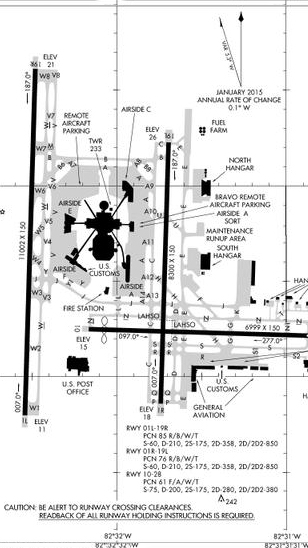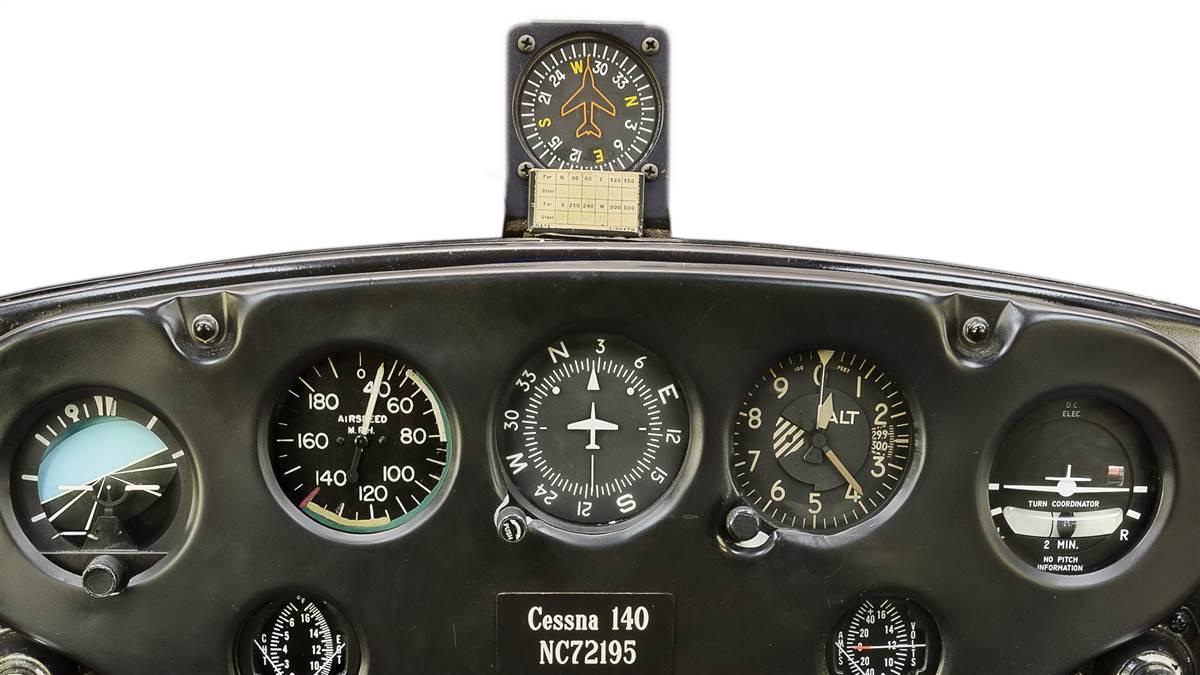Old Reliable
Explaining the magnetic compass

“Yes, we do,” his instructor replied. “Matter of fact, we’ll be using it on today’s flight.” Davis was stunned.
“Once I started taking lessons, I realized how important the magnetic compass was to navigation,” Davis explained. “It’s actually more reliable than the heading indicator, which is why we use the heading on the magnetic compass to set the heading indicator. It’s just as important when planning a flight or when there’s an emergency. It’s just about the only thing that works without electricity.” The compass is important enough to navigation that it’s one of the instruments required for flight under FAR Part 91.
Although the magnetic compass is simple and reliable, it’s also prone to errors and sometimes difficult to interpret. It’s important to understand how the magnetic compass works and its inherent deficiencies.
Inside the magnetic compass are two small magnets attached to a metal float that rotates in a clear fluid similar to kerosene. A circular compass card wrapped around the float is marked with letters for the cardinal directions and a number for every 30 degrees between, with hash marks for five- and 10-degree intervals. A lubber line on the glass window shows your current heading.
The Earth’s magnetic field will cause magnets that are free to rotate to align with the lines of flux between the north and south poles. As you fly, the compass attempts to remain stationary, with the north-seeking end always pointing to the north pole. Westerly headings appear to the right and easterly headings appear to the left when facing north, which can be confusing at first. “It didn’t make sense that east and west were on the opposite side of the compass from where they should be on a map.” Davis said. “That is until I learned that the compass needle doesn’t actually rotate, but that you and the airplane actually rotate around the stationary compass card when turning in a different direction.”

Because the Earth’s magnetic field inclines downward the closer you get to the North Pole, the compass needle dips toward the magnetic field. This is known as magnetic dip. As long as the compass card is parallel to the surface of the Earth, such as in straight and level, unaccelerated flight, magnetic dip will not cause compass errors. However, moving the airplane so that the compass card does not stay parallel allows the needle to dip toward the magnetic field. This causes the compass to temporarily read an inaccurate heading.
Accelerating an airplane in an easterly or westerly direction causes errors related to magnetic dip. Accelerating causes the compass card to tip downward because of inertia, and the needle dips toward the magnetic field, showing a more northerly heading. Decelerating causes the compass to show a more southerly heading. “It only takes a few seconds for the compass to return to the correct heading after you return to unaccelerated flight, but if you aren’t aware of it, it can seem like you turned in the wrong direction and then you’ll end up turning in the opposite direction to compensate, which is something you don’t want to do,” Davis said. The mnemonic ANDS—Accelerate North, Decelerate South—may help you remember this tendency.
Magnetic dip also can cause inaccurate readings when turning from or through north or south. When the airplane turns, the needle dips toward the magnetic north pole. As the airplane turns from or through a northerly heading, the compass heading lags behind the airplane’s actual heading. As the airplane turns from or through a southerly heading, the compass heading leads the airplane’s actual heading.
Deviation in the magnetic compass is caused by the magnetic fields from the airplane’s equipment, such as lights, radios, and metal. A compass deviation card is usually mounted just beneath or near the magnetic compass. This tells you the heading to select in order to fly a specific magnetic heading. The amount can vary on different headings.
Even though these errors can be troublesome, the magnetic compass still provides the most accurate heading information in straight and level, unaccelerated flight. It also has only one moving part and doesn’t need batteries. This makes the magnetic compass one of the most useful and reliable pieces of equipment in your airplane.
The heading indicator provides the same heading information found on the magnetic compass. Before each flight, the compass should be used to set the heading indicator’s heading while stationary on the ground. During flight, the heading indicator is set referencing the magnetic compass in straight and level, unaccelerated flight.
The heading indicator is used because it’s not affected by Earth’s magnetic field and does not have the errors inherent to the compass. The instrument is, however, susceptible to gyroscopic precession, which is an error caused by the mechanical friction imposed on the spinning gyroscope. “Without the magnetic compass, the heading indicator would be useless because it wouldn’t have accurate heading information to go by. My instructor always had me use the magnetic compass to set the heading indicator before each flight,” Davis said.


 The Earth has two north poles: true north, where lines of longitude converge on a map, and magnetic north, a location that changes with the Earth’s shifting magnetic field. Since runways are numbered according to their magnetic orientation, that means occasionally a runway must be renumbered. In 2011, Tampa International Airport (TPA) shut down its primary runway to repaint the numeric designators at each end and change signs around the airport. Runway 18R/36L was no longer aligned with the 180-degree/0-degree north-south axis. The runway reopened as 19R/1L. The runway hadn’t moved, but because of the changing magnetic poles, it was now oriented at 190 degrees/10 degrees. —Sarah Deener
The Earth has two north poles: true north, where lines of longitude converge on a map, and magnetic north, a location that changes with the Earth’s shifting magnetic field. Since runways are numbered according to their magnetic orientation, that means occasionally a runway must be renumbered. In 2011, Tampa International Airport (TPA) shut down its primary runway to repaint the numeric designators at each end and change signs around the airport. Runway 18R/36L was no longer aligned with the 180-degree/0-degree north-south axis. The runway reopened as 19R/1L. The runway hadn’t moved, but because of the changing magnetic poles, it was now oriented at 190 degrees/10 degrees. —Sarah Deener Most light aircraft are equipped with a wet compass, sometimes referred to as a whiskey compass. A vertical card compass is another type of magnetic compass that has fewer errors—and, because it looks a lot like a heading indicator, it’s generally easier to read. Instead of using liquid to dampen oscillations, the vertical card compass uses eddy current damping, in which an oscillating magnet produces electrical currents that oppose the oscillations. —Sarah Deener
Most light aircraft are equipped with a wet compass, sometimes referred to as a whiskey compass. A vertical card compass is another type of magnetic compass that has fewer errors—and, because it looks a lot like a heading indicator, it’s generally easier to read. Instead of using liquid to dampen oscillations, the vertical card compass uses eddy current damping, in which an oscillating magnet produces electrical currents that oppose the oscillations. —Sarah Deener Pilots navigate using magnetic headings, but directions on a sectional chart are in reference to true north. The angle between true and magnetic north is called variation. Understanding the difference between true and magnetic headings is important for flight planning.
Pilots navigate using magnetic headings, but directions on a sectional chart are in reference to true north. The angle between true and magnetic north is called variation. Understanding the difference between true and magnetic headings is important for flight planning.
